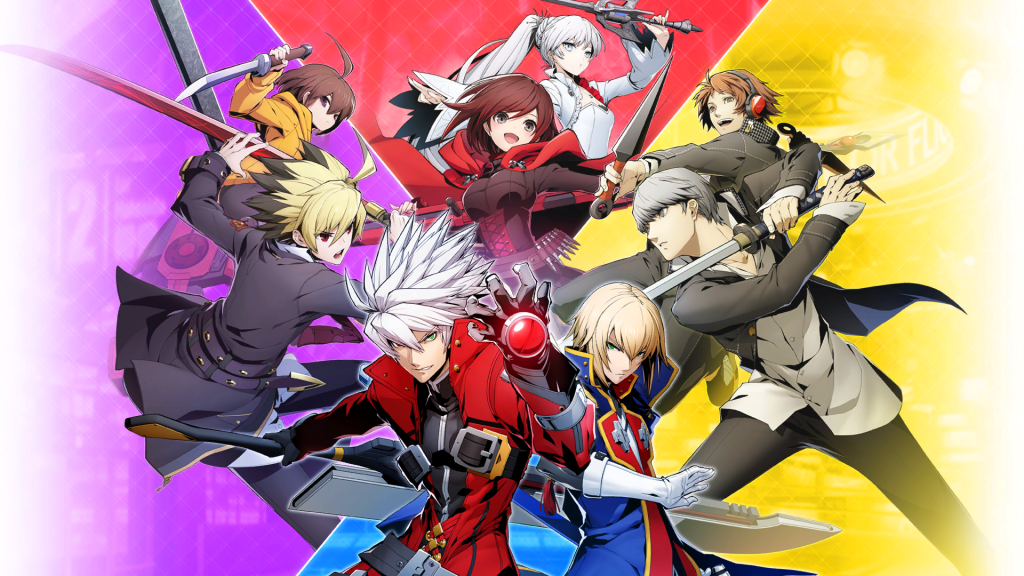
Sorry about this review being late, as I already know of this posting that BlazBlue: Cross Tag Battle is already out and those of you who are reading this review that had interest probably picked it up. I did not receive this review code from Ark System Works until literally 7 minutes before the game was set to be launched! On the flipside, some of you who are holding out for an unbiased review might still be waiting, so thankfully you know everything is fine as “I am here”!
It should be noticed that as far as series, I have heard of every single property currently covered in BlazBlue: Cross Tag Battle; BlazBlue, RWBY, Persona 4 Arena, and Under Night In-Birth. I am most familiar with the BlazBlue games, though I have briefly played Persona 4 Arena/Ultimax but it has been some years. Though I was really wanting to get my hands on the new fighting games IP by Soft Circle French-Bread since I enjoyed Melty Blood, I had not gotten a chance to play Under Night In-Birth Exe: Late [st] yet.
However, for this review I will be doing my very best to not make comparisons of characters in this game versus their past selves; it is an entirely new game with its own fighting systems and mechanics. I will do my best to keep that in mind when going through the game and experiencing everything it has to offer.
BlazBlue: Cross Tag Battle Opening Movie
Entrance
This game starts you off at the “Entrance”, which is basically a hub where you can connect to everything that BlazBlue: Cross Tag Battle has to offer (they even describe it as the game’s “main menu” in the initial prompt you receive when you load into the game for the very first time). You are able to walk around as an avatar (default is “Ragna the Bloodedge” from BlazBlue), one of which you can choose the look of later on. The hub itself is a small sealed off area with background pieces representatives of the four universes that are crossed over in this fighting title; BlazBlue, RWBY, Persona 4 Arena, and Under Night In-Birth. You also have entrances to the Kaka Kittens Item shop, Online Lobby, Rankings Board, Episode Mode, Kajun (F.A.Q.), and Playing Online/Offline.
Kajun
A prompt appears shortly after you arrive, it tells you to talk to “Kajun”, an NPC avatar, if you have any questions that may need to be answered (in the picture above, she is the light-purpled haired avatar with the big question mark above her head). Kajun is basically a help menu with F.A.Q. (frequently asked questions) to help get a player started and familiarize themselves with the game through brief synopsis of the system; “What are P$?”, “I want more character colors!”, “How do I move the camera?”, etc. They even have a “What’s up with network color?” which describes the “threat level” of a player, something they did not previously do in “Dragon Ball FighterZ“.
Main Menu
As you can also see, you can push the triangle button to bring up the “Main Menu” while within in the hub (as well as a few other locations), which have a variety of different menu options available to the player that are separated into four separate categories; Offline, Online, Customize, and Options.
- Offline — Episode Mode, Training Mode, V.S. Mode, Tactics Mode, Survival Mode, Gallery Mode, and Replay Theater.
- Online — Online Lobby, Entry, Create Room Match, Room Match Search, and Rankings.
- Customize — Profile, Customize, and Item Shop.
- Options — System Options, Game Options, Display Options, Sound & Language, Network Options, and Button Settings.
Options
Allows customization of various system options that affect most of the game’s modes.
- System Options — Vibration Setting, Camera Control (Horizontal), Camera Control (Vertical), Auto-save, and Save.
- Game Options — Game Difficulty, Time Limit (Versus), Pause Menu, and Save Replay (Versus).
- Screen Options — Upper HUD and Lower HUD.
- Sound & Language — Master Volume, BGM Volume, Voice Volume, System Voice Volume, Sound Effect Volume, BG Sound Effect Volume, Battle Voice Language, Voice Language, and Text Language.
- Network Options — Replay Upload, Saving Replays (Ranked Lobby), Saving Replays (Casual Lobby), Auto-save Replays (Room Matches), and Auto-save Replays (While spectating).
- Button Settings — Attack A, Attack B, Clash, Change, Partner, Simple Aerial Dash, Reverse Action, Throw, Cross Burst, Function 1, and Function 2.
Customize
This menu option allows you a few options over customizing certain aspects of your online representation. You will be able to choose from “Profile”, “Customize”, and “Item Shop”.
Profile
Able to see their current online card and allows the player to access to their online battle history (the player’s 3 most used characters along with their current TP (Tag Points); Rank Lobby, Casual Lobby, and Room Match Battles).
Customize
The Customize option is where you are able to pick different aesthetics you have acquired to represent your online identity.
- Avatar & Accessories — Option allows for players to choose the character they want to represent them as they walk around the Entrance and Online lobbies
- Icon — Which character picture the player wants to display in the upper right hand section of their Player Card.
- VS Plate — The Player Card background itself.
- Quick MSG — Able to set a short message of whatever you want that can be viewed by other players that is displayed on the Player Card.
Item Shop
The Kaka Kittens Item shop is where you will be spending the P$ you earn through playing the various modes that BlazBlue: Cross Tag Battle has to offer.
- Lobby Avatar Shop — Able to buy different lobby avatars from the 4 series representative in BlazBlue: Cross Tag Battle; costs 25,000 P$ each.
- Icon Shop — Able to buy different icons which will appear in the upper left-hand corner of the Player Card; costs 500 P$ each. Has different categories, including “Papery” from the emotes you can use with your avatar and previous art from different games in each of the 4 series that make up BlazBlue: Cross Tag Battle.
- Title Plate Shop — The plates available to customize your title; costs 5,000 P$ each.
- Color Shop — Allow you to buy different palettes in a variety of color combinations for your preferred characters; costs 10,000 P$ each.
IMPRESSIONS — Overall, I feel like we do not have very many options available to us here. On the other hand, I did not expect much since it is a fighting game using sprites from various other games, it is nearly impossible to get new outfits or to customize anything outside of the Player Card. However, I would have liked to at least been given more palettes rather than having additional colors for characters be locked behind $2.99 packs as DLC.
Offline
Offline mode contains the most variety out of all of them; Episode Mode, Training Mode, V.S. Mode, Tactics Mode, Survival Mode, Gallery Mode, and Replay Mode.
“Episode Mode” is the story mode for BlazBlue: Cross Tag Battle. It discusses the conditions in which everyone from the 4 franchises representative in this game come to be in the same spot and why they have to fight in a tag team battle format. There are different chapters; The prologue, BlazBlue, Persona, Under Night In-Birth, and RWBY. There are separate endings, different story paths, and the true endings that are reminiscent of BlazBlue‘s typical story mode.
IMPRESSIONS — The story to me was pretty good, it was funny throughout and characters retained their personalities and traits from their original games. It was interesting to see some of the teammates and the interactions. However, I feel like the story in itself was not very good and could have been done better, the boss was also pretty standard with them not deviating at all within the “true ending”. Besides that, the only story with multiple paths is the BlazBlue storyline, I would have like to see alternate endings for all series involved.
To be honest, I was hoping for something more elaborate like they do within the core BlazBlue games, not to mention they missed a chance to bring in some original characters for this game or at least a new unlockable character we have not seen before. All-in-all, it was an enjoyable experience but not one I see myself playing through completely more than once, but since this is a fighting game, that one time is enough.
This is a typical mode found within any modern fighting game. The purpose of training mode is to practice combos, situations you may find yourself in, and how to defend against your opponent’s offensive pressure, mix-ups, and potential punishes due to your own incomplete block strings. You have a few options within training mode to customize the conditions to your preferred training regimen.
- Character & Stage BGM — Deals with what characters are current present in training mode, the stage you are on and the music for that stage.
- Basic Settings — Has to do with basic settings like character health and the starting positions of the characters on the stage.
- Dummy Settings — Deals with the behavior of the CPU. Can adjust things like counter hit, blocking, and ukemi behavior.
- Information Display — Has to deal with the display of information during the training process; damage numbers, input command history, etc.
- Recording Settings — Has to deal with recordable actions you can give to the training dummy in order to simulate anything the player feels necessary to train against.
- Character Settings (BB/P4A) — Deals with character specific mechanics; such as Chie Satonaka’s Charge and Rachel Alucard’s Sylpheed.
IMPRESSIONS — Training mode is fine, it has typical options you see in other fighting games without trying to reinvent the wheel. It is sufficient in its options to practice against your opponent’s option while exploring your own, I have no qualms with anything we find here since I find the key aspects are not lacking. The only thing I would have liked is for this mode to also be online so you can train with a friend and explore options together.
V.S. Mode
This is typical of what you see in other fighting games, it simply allows you to play another player or a CPU offline locally. This is ideal for when a friend comes over and you want to go head-to-head. Not to mention you will see this mode at the variety of tournaments that are sure to be held for BlazBlue: Cross Tag Battle, not to mention it will be the mode most used at the Evolution 2018 World Fighting Game Championships.
Tactics mode helps to teach the player the core mechanics of the game. It is designed to introduce those who are new to BlazBlue: Cross Tag Battle, as well as fighting games in general, a rundown of what you should be doing. There are a few different options inside of tactics mode which cover a variety of necessary things.
- Basics — This teaches you the basic mechanics of the game starting from the ground up. You have things like the game rules, basic movement, guarding, ukemi, and how to use various skills. This is ideal for anyone who wants to learn what is different in BlazBlue: Cross Tag Battle compared to other games in the BlazBlue series, or for people who are new to fighting games in general.
- Practical Application — These deal with some of the core game mechanics that are more intricate and complex; such as the Cross Burst, Throw Rejection, Resonance Blaze, etc. You will need to master these in order to make the most out of the unique fighting system.
- Characters — This gives brief explanations of each character within the cast, a list of their moves the player can perform, and combo trials ranging from basic to more advanced. This is a must do for players who are trying to learn exactly how to combo with any particular character and get an inkling of how to go about playing with them.
- Mission — In my honest opinion, this should have been called “Practical Application” as it is tailored to situations the player will encounter within the game and will need to deal with. This type of mode first debuted in the Guilty Gear Xrd series, and I feel like it should be in every single game. It shows you how to counter ukemi hunters, how to punish whiffed attacks, and so much more that players will need to know how to do. This is absolutely essential for those who do not understand fighting games enough to know what they should be working on.
IMPRESSIONS — I find this mode to be good, they did not take as much effort as they typically do within the BlazBlue series or in the Guilty Gear series, but they did enough so that those who want to be familiar with the system do not find themselves starved for information. The “Mission Mode” is good, it teaches you things you might not have thought about and can be utilized in real matches the vast majority of the time.
Overall this shows the game has an impressive amount of depth despite its simplified fighting game button layout; auto-combos are quite good but the necessary measures have been taken to prevent button mashers from gaining too much of an upperhand (such as not being able to Cross Burst after a Universal Reversal attack). All-in-all, I think those who give the game a shot will be pleasantly surprised how well a newbie friendly approach to their typical complex mechanics achieved what they were after; enough complexity to keep veteran fighters interested while being fun enough for newcomers to enjoy what the characters have to offer.
Survival Mode is what you would normally find in any game with this name; you are to defeat randomly generated teams of opponents one after the other in order to attempt to see how many you can defeat before your team’s health is depleted to zero. You regain a little bit of life after each successful win, so the better you do the more health you can gain after each fight.
IMPRESSIONS — Honestly, this is just par for the course for this type of mode. The only thing I have a problem with is that I do not believe you have “Boss” type characters that you will encounter (though if you did, it more than likely would be the one from Episode Mode). As of this posting, I was able to get 19 consecutive wins in survival before succumbing to the CPU opponents, so possibly there is something once you reach level 20. However, as of now, at levels 10 or 15 I did not see anything more than what they present to you. Also, does not seem like they give you a huge increase in P$ either, giving less incentive to play this mode.
This mode is a collection of character art, illustrations, and movies that are present in BlazBlue: Cross Tag Battle. If anyone is familiar with the BlazBlue series, every iteration has had something akin to a Gallery Mode, sometimes even just calling it that. More illustrations can be unlocked as you progress through Episode Mode and begin to obtain endings and character interactions. Overall, it is pretty standard and a self-explanatory mode that does what it is suppose to.
Replay mode
Just as the name suggests, this is a mode tailored for replays that the player has saved of their matches. It is able to be accessed from the main menu whenever the player feels like; though certain match-types require that the player be connected online to watch them. Unknown whether-or-not replays will be deleted when the game’s characters or mechanics received a balance patch, or if it will be saved in a separate section according to the game version number.
Online
This is a rundown of BlazBlue: Cross Tag Battle‘s online mode. It is mainly having to do with the many different ways you can meet up and battle other players who are enjoying the game; though you also have a mode to watch your replay and to view your overall ranking in a variety of different categories.
- Online Lobby — Various hubs for Casual and Ranked Matches that can hold up to 64 people at a time. Contains various one-versus-one stations with an option available to rematch. Can see opponent’s username, threat level, avatar, and connection freely as you pass them by. Also features options for changing characters, stages, and background music from the menu.
- Entry — Where you can set your characters, stage, background music, and preferences for Ranked Matches that also include connectivity requirements.
- Create Room Match — Allows you to create your own room with an optional keyword for private matches; can set the parameters of the room (Winner stays, Fixed matches, Loser stays, etc.).
- Room Match Search — Allows you to search for created rooms based on preferences that you set; also includes a keyword option in case a friend has created a room and you want to search for them to play in a few Room Matches.
- Rankings — World Rankings for BlazBlue: Cross Tag Battle! Includes
IMPRESSIONS — The online is one of the smoothest I have come across, but that is no surprise from Arc System Works. While most may feel like delay-based netcode is archaic and that they should be using rollback netcode, it has always worked for them since I began to play their online fighters starting with BlazBlue: Calamity Trigger.
The only real problems I have about the whole thing is that Room Match should have the same settings as the online lobby; we are currently missing the options to change our preferences (character, stage, and background music) and we cannot rematch. Matches are easy enough to get into and matchmaking in rooms is quick enough to where it is not a total hindrance, but I wish the option was readily available. Oh! Also, like most Arc System Works fighters (outside of Dragon Ball FighterZ) it is difficult to get Ranked Matches, mostly because the majority of players prefer to stick to online lobbies (as seen in Guilty Gear Xrd series).
Downloadable Content (DLC)
BlazBlue: Cross Tag Battle has already announced some DLC! Some are already out in the store and some are coming along shortly. While some are characters, there are also three DLCs for different colors that affect all characters when purchased. The colors themselves are $3.99 each and you can buy character packs for $4.99 each (which contain multiple characters).
- BlazBlue — Platinum the Trinity, Jubei, and Hakumen.
- Persona 4 Arena — Kanji Tatsumi, Aegis, and Naoto Shirogane.
- Under Night In-Birth — Orie Ballardiae, Carmine, and Vatista.
- RWBY — Blake Belladonna and Yang Xiao-Long.
Besides the characters listed above, there have also been rumors of additional DLC characters: BlazBlue’s Izayoi, Mai Natsume, and Nine the Phantom; Persona 4 Arena’s Mitsuru Kirijo, Akihiko Sanada, and Labrys; and finally Under Night In-Birth’s Merkava, Yuzuriha, and Mika. There have also been rumor’s of Senran Kagura character’s Asuka and Yumi, but nothing confirmed there either.
The only thing that disappointments me is that we do not have other characters that are rumored from RWBY, but I did hear the sprites took longer than anticipated. I would have loved to possibly get Nora Valkyrie as a playable character, Penny would have been good as well since I love her personality.
The Verdict
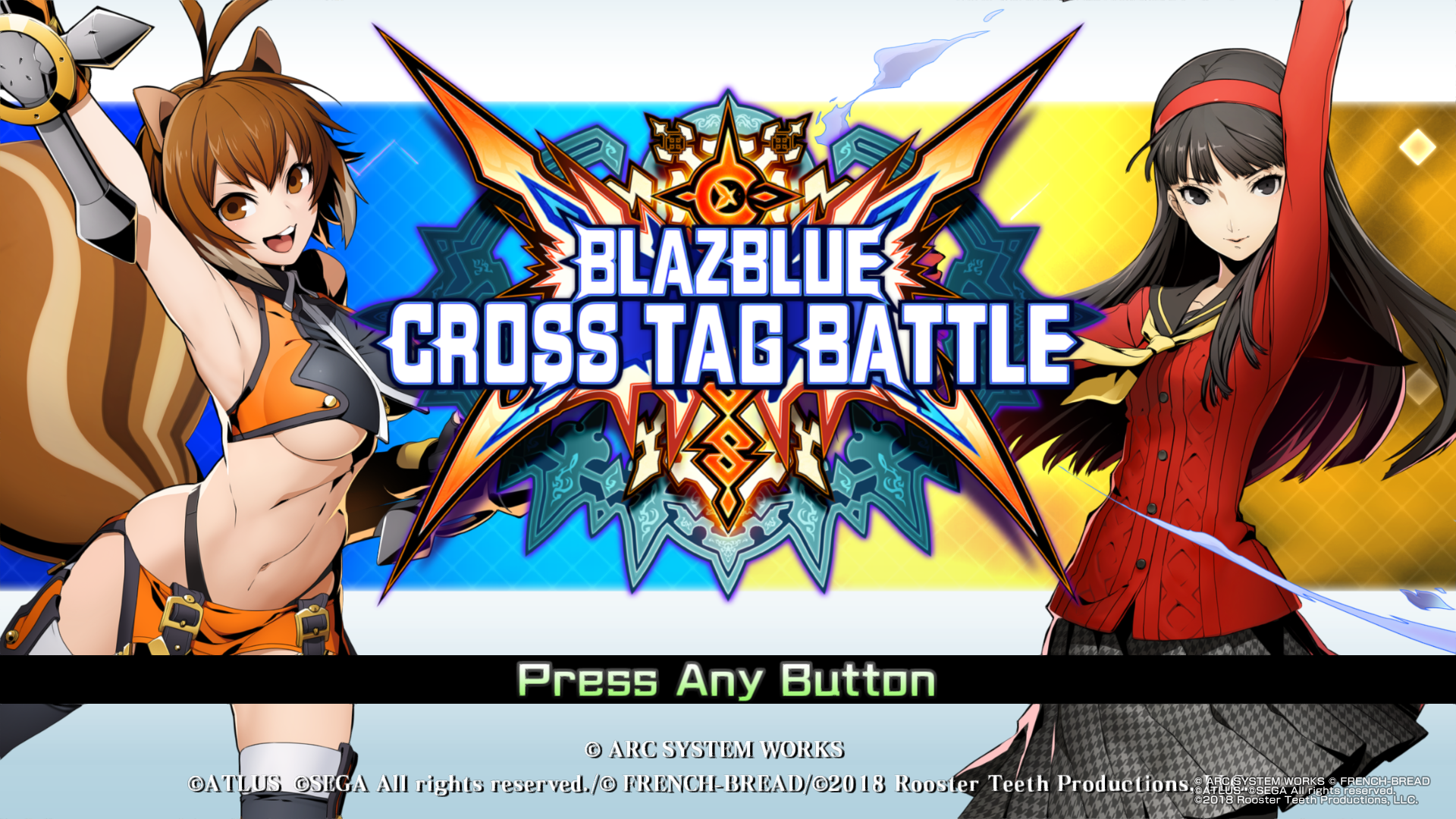
STRENGTHS — Diverse combatants from many great series; Fast and fun combat system; Amazing music from RWBY, P4A, BlazBlue, and UNiB; Great stages from all series included; Simple and effective online.
WEAKNESSES — Did not redo some of the more dated BlazBlue sprites, Could use more color palettes that are not DLC, Needs more customization in the way of unlockable content, and Simplified fighting style could cause some frustration due to button-mashing mishaps causing full combos from some opponents.
Final Thoughts — BlazBlue: Cross Tag Battle is a great crossover series that is done in a way expected of Arc System Works; with love, respect to all series involved, and a fun overall fighting game experience. The music, characters, and stages of BlazBlue, Persona 4 Arena, RWBY, and Under Night In-Birth come together to create an immaculate experience in the way that older fighting games like Marvel vs Capcom 2: New Age of Heroes, which utilized sprites from X-Men: Children of the Atom, Street Fighter Alpha, etc., did. The only glaring weakness I can see is that they did not do a lot to keep casual gamers playing outside of the usual fighting; Survival Mode can get stale and something akin to Guilty Gear Xrd‘s “M.O.M Mode” would have been appreciated.
I think those who enjoyed any of the fighting game series included, or want to see RWBY characters in their first hardcore fighter, will be impressed by what BlazBlue: Cross Tag Battle has to offer. They kept things fresh by not appealing too much to just one of the series’ mechanics and included enough to give it an identity of its own while presenting a good mix of offensive pressure, defensive mechanics, and countermeasures to balance each of them out. While some could bag on Arc System Works for the simplified controls and (auto-combos), the system is deep enough to afford some leniency for newer players and those who have been scared of “anime fighters” due to their grueling execution requirements opposed to game series like Street Fighter and Mortal Kombat, but full combos coming from mashing could cause some frustration in veteran players.
In closing, I am giving my recommendation for anyone who is on the fence about BlazBlue: Cross Tag Battle to purchase it; the game is fun, has a great amount of characters representative of awesome series, and I personally feel whoever buys it will enjoy it be they casual or tournament-ready gamers. In an genre which are still seeing new games announced and more in the way of a the “tag format”, BlazBlue: Cross Tag Battle manages to be unique and carve its own identity. Cannot wait to see what they have to offer come time for Evolution 2018 in August!

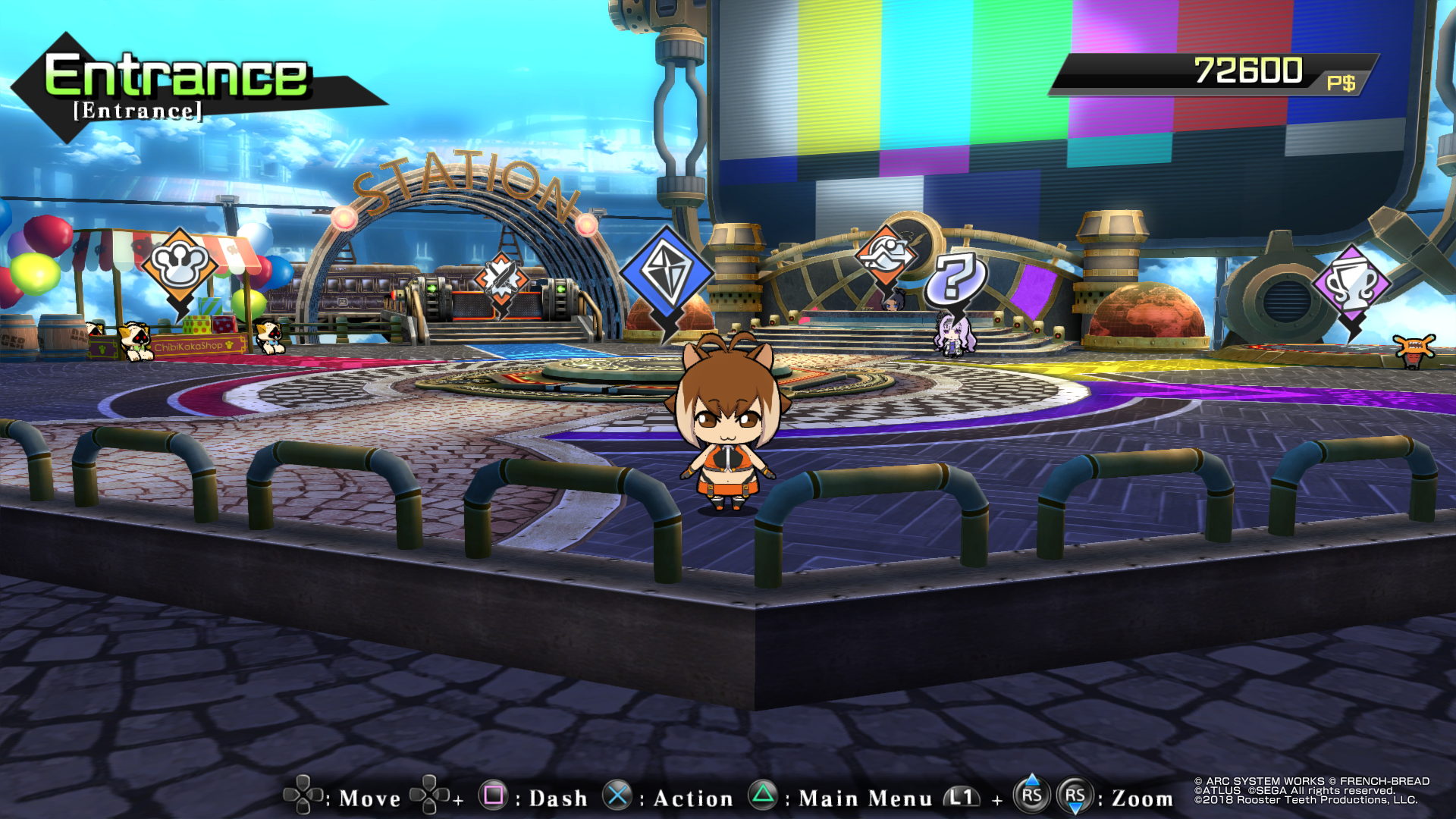
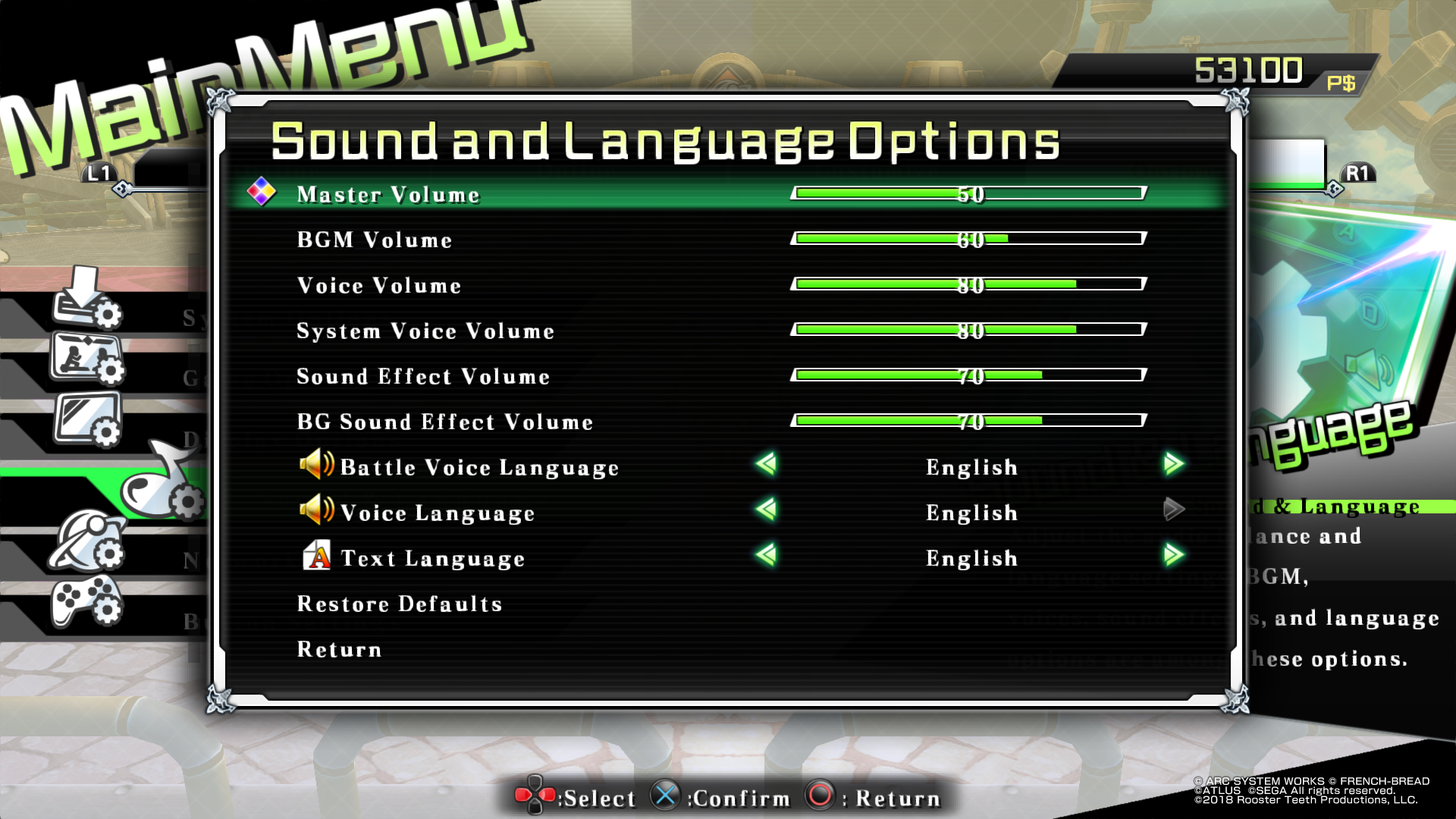
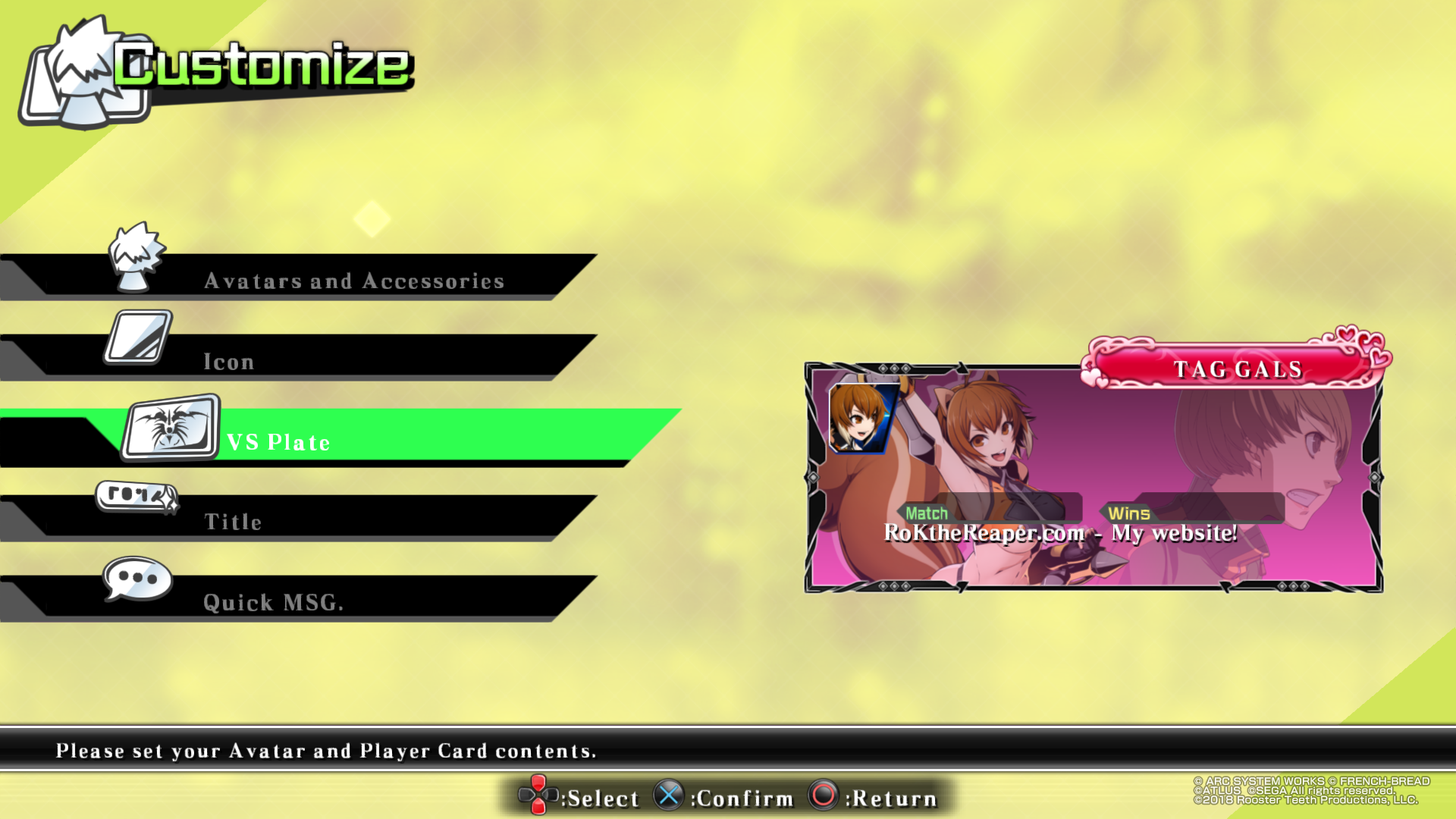
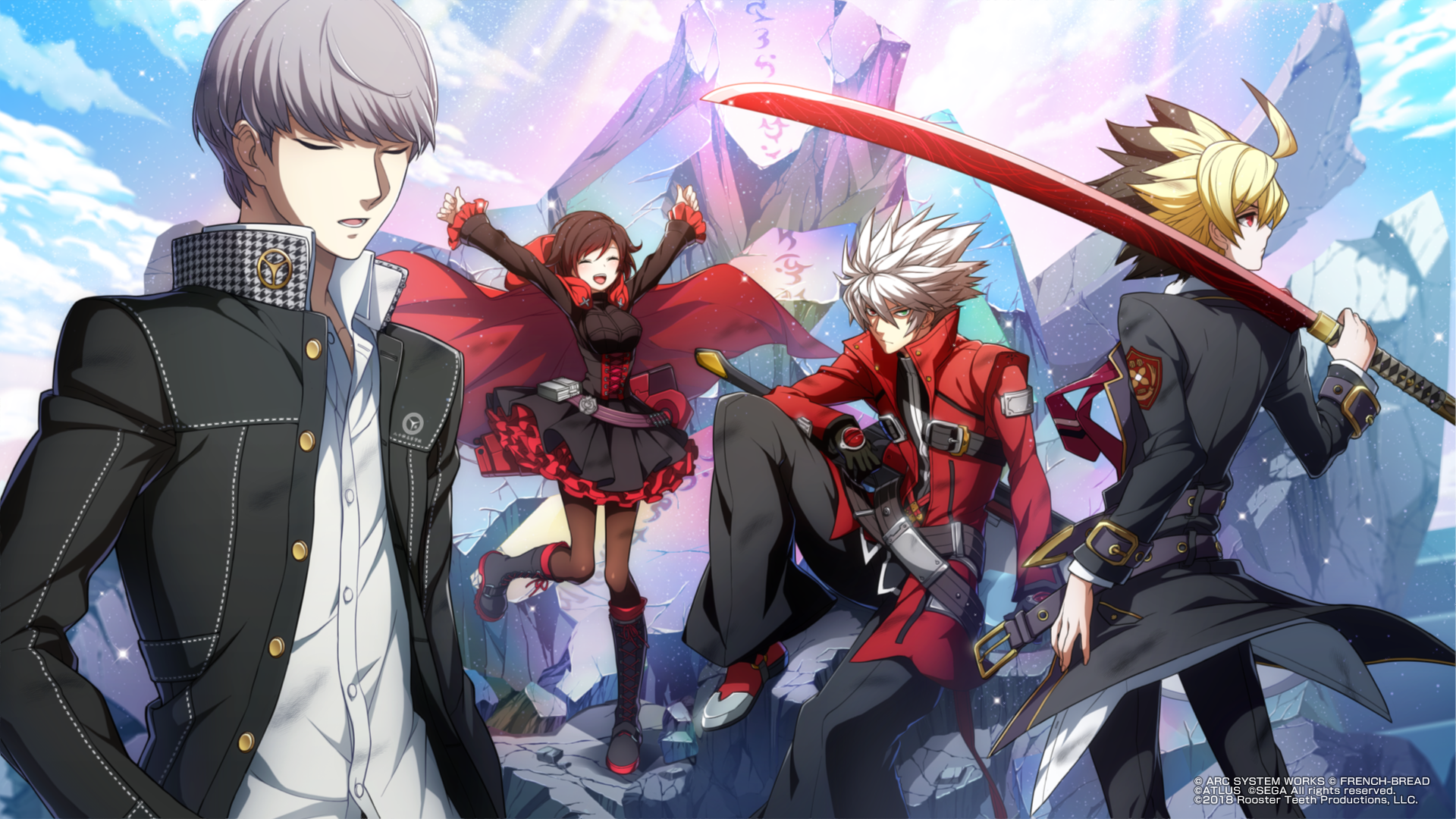
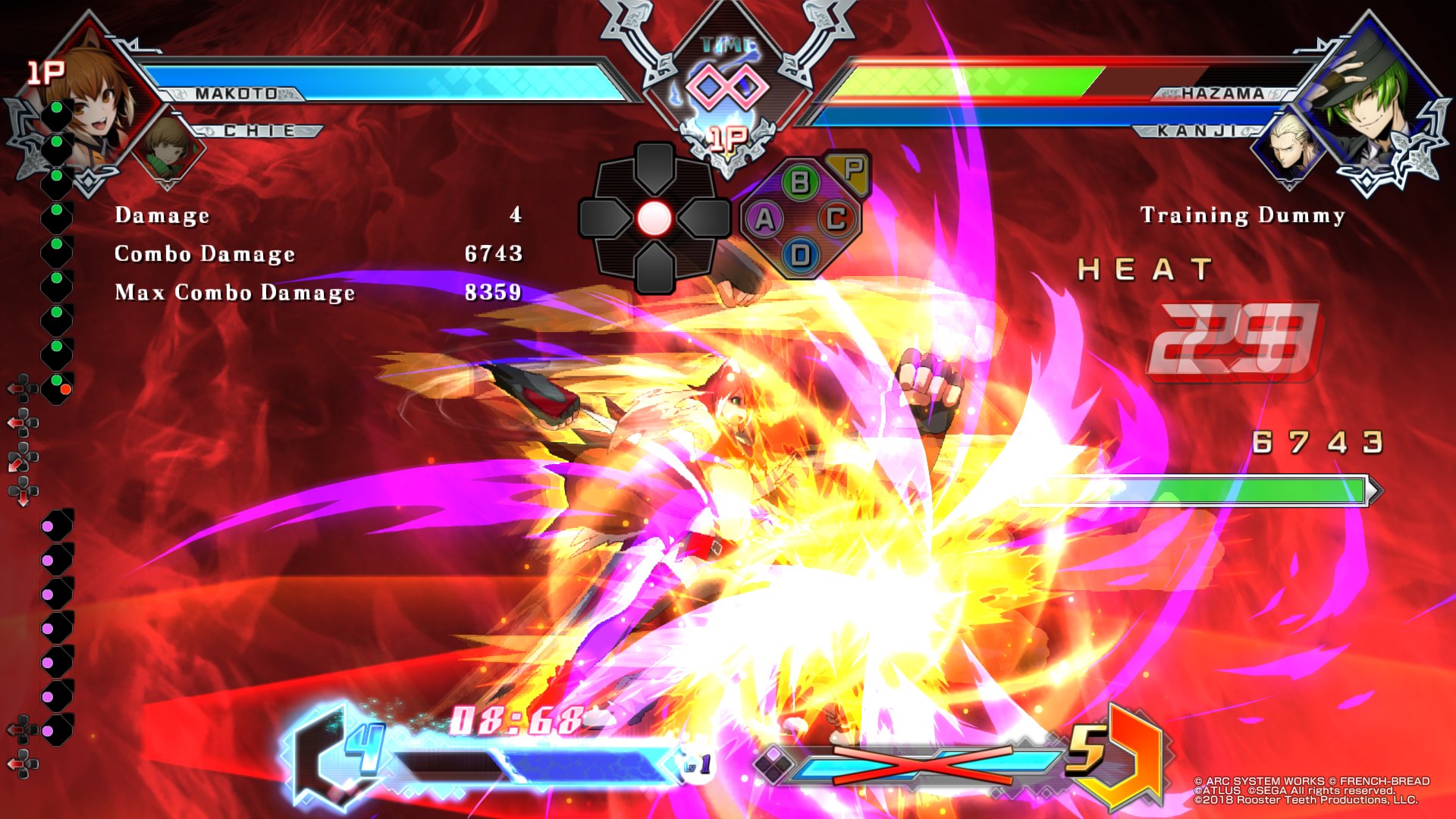
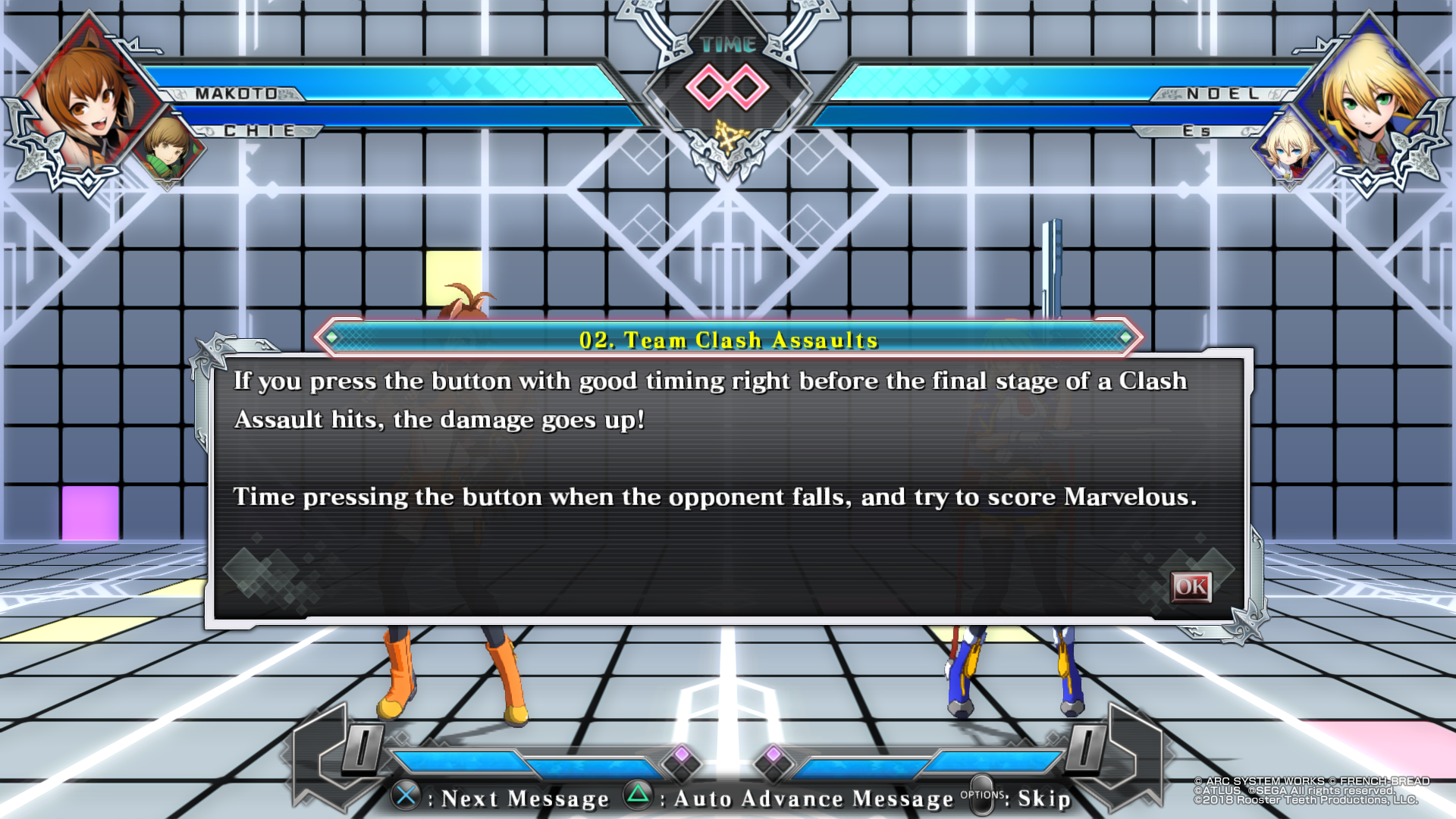
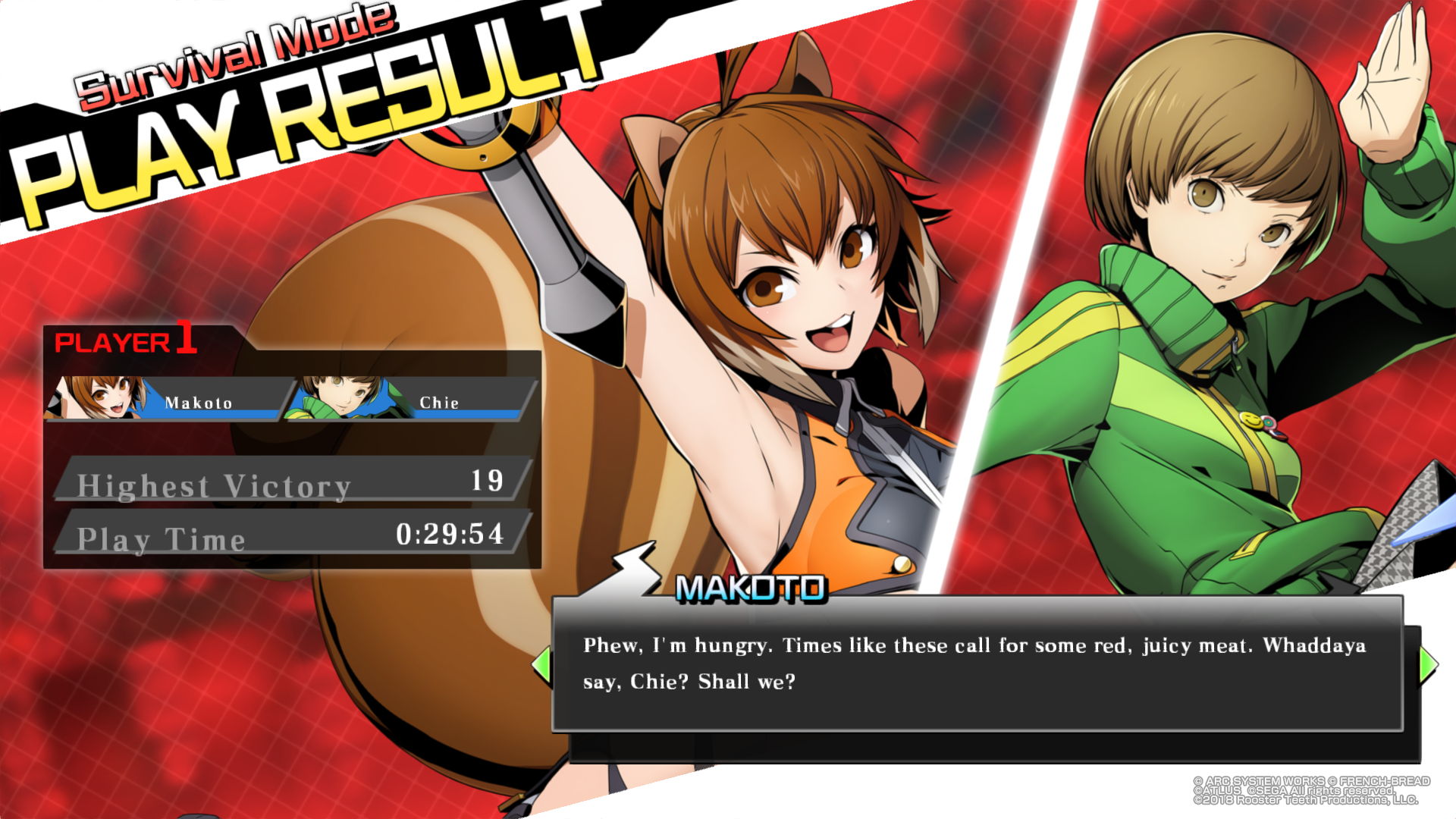
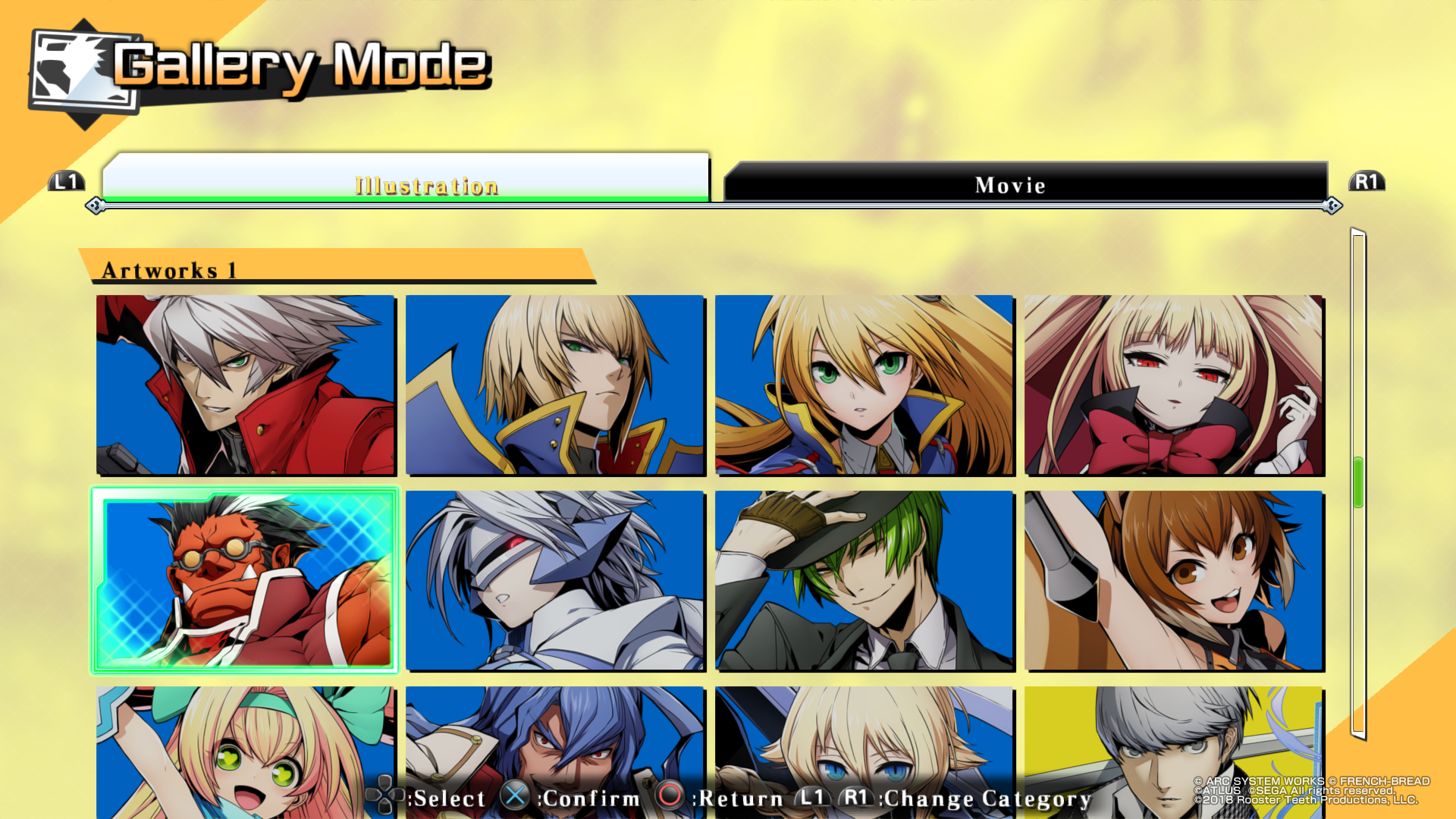
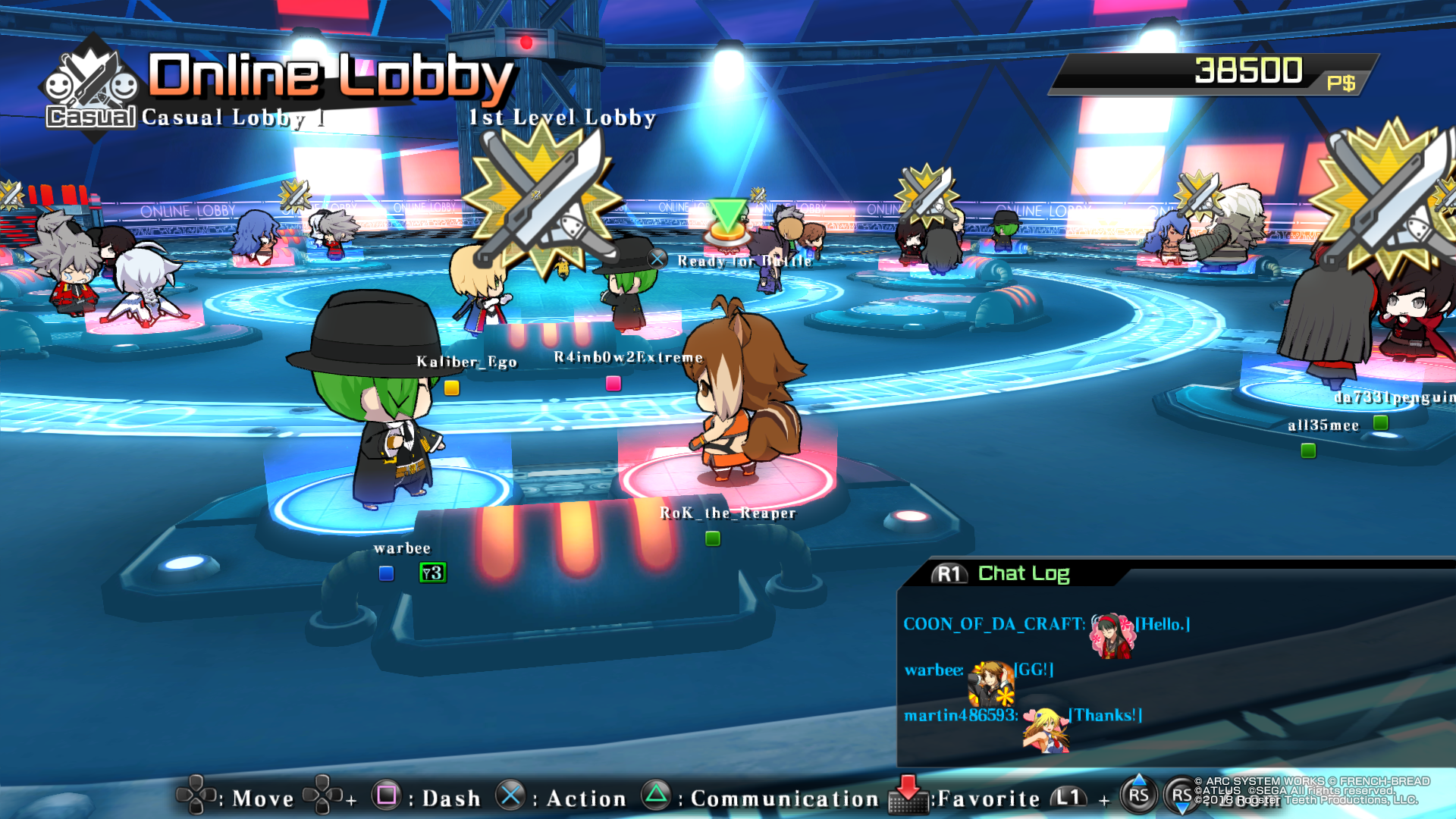
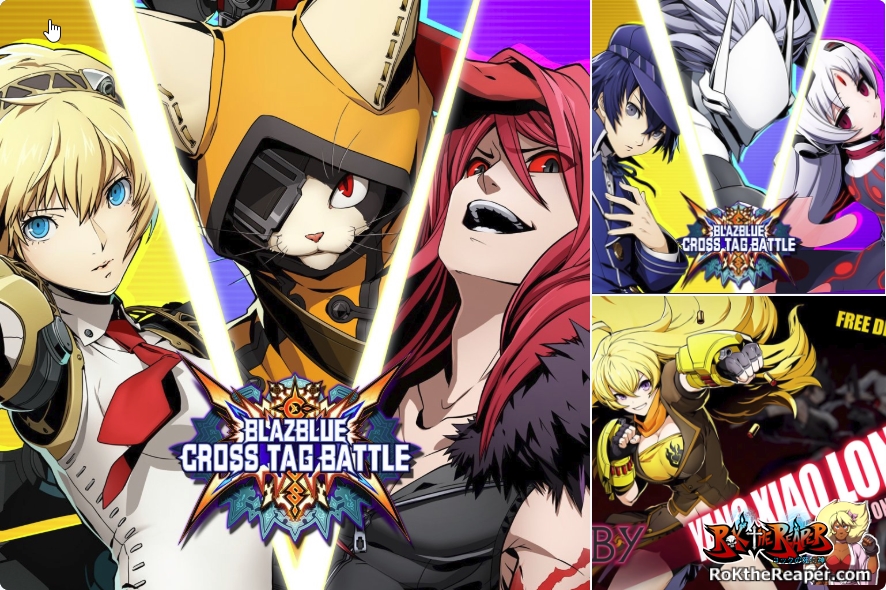

5
Pingback: The Reaper Nightmare Tournament Series 死神の悪夢トーナメントシリーズ | RoKtheReaper.com
Pingback: RNTS-BBCTB Tournament Information | RoKtheReaper.com